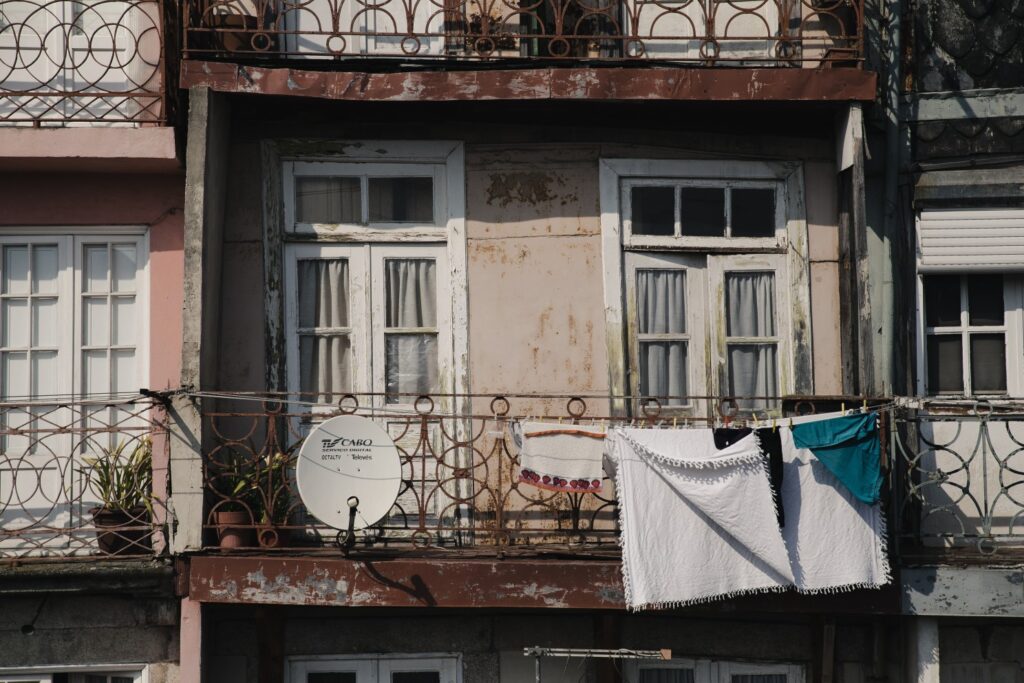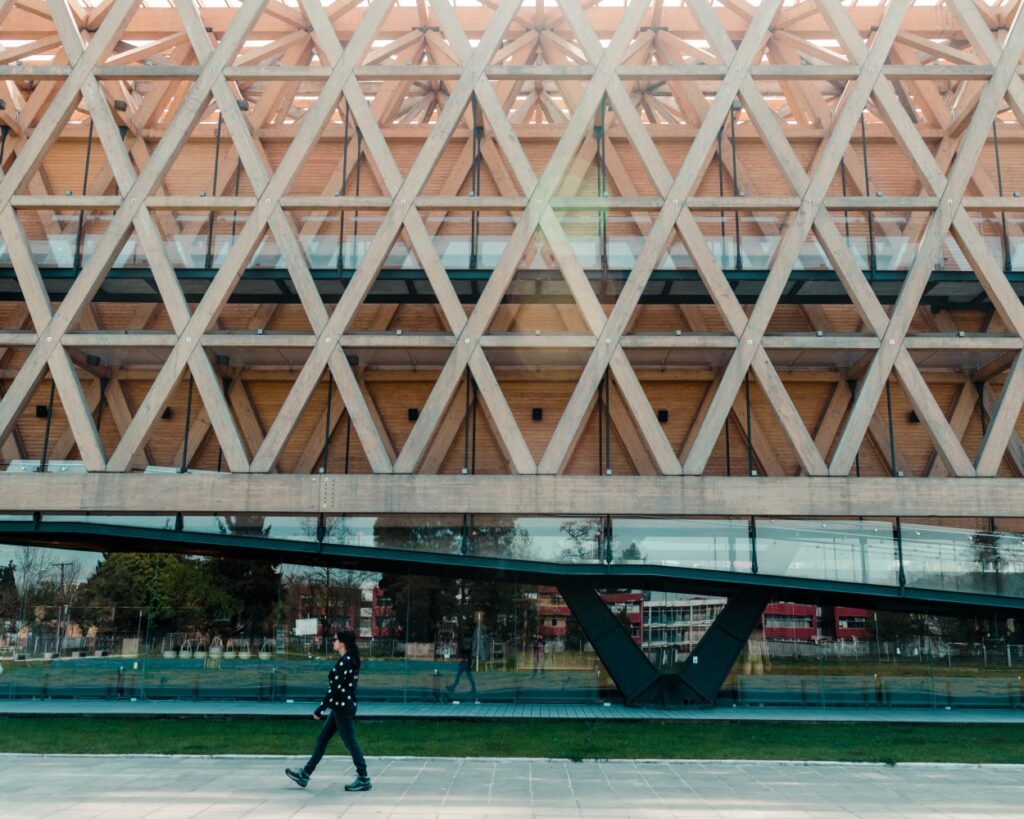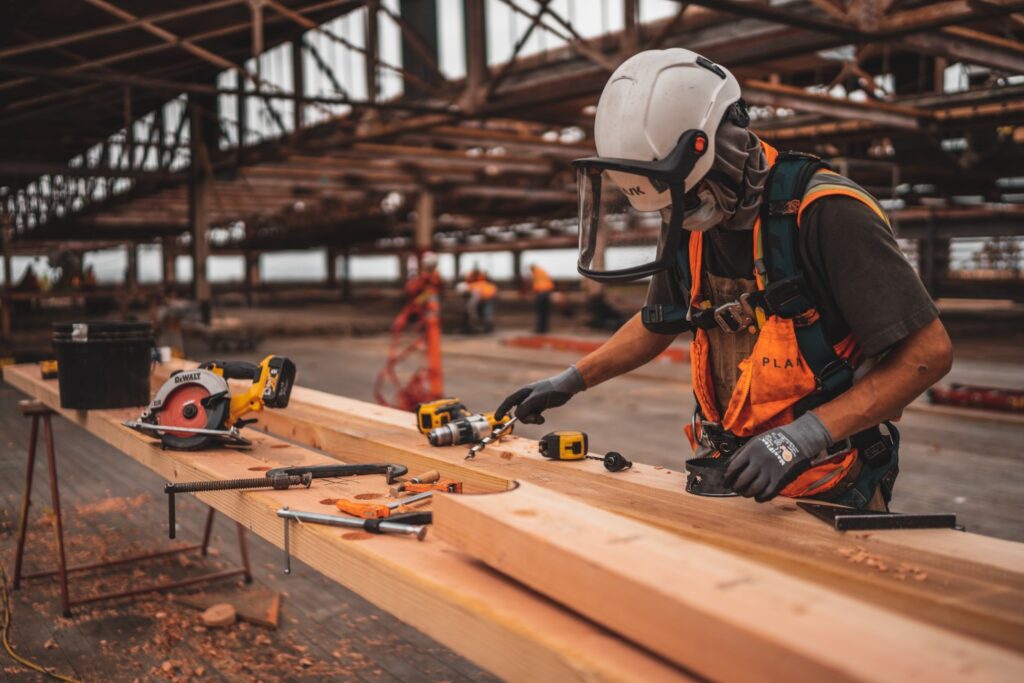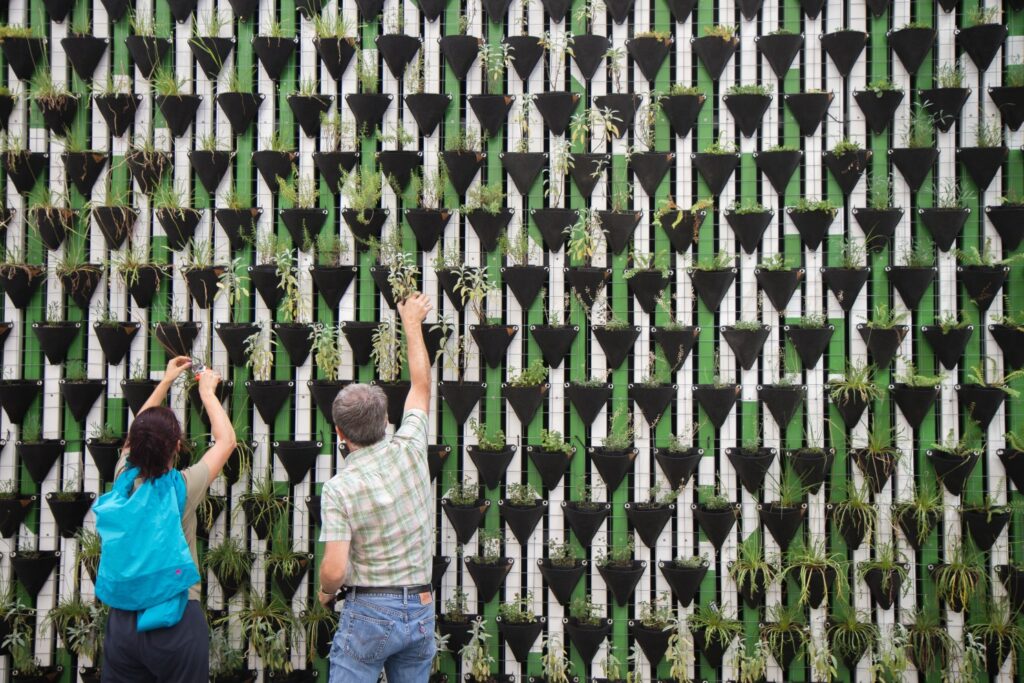So, what is The Meaningful Living?
Read More

This article was first published in Portuguese as a guest contribution to Keller William's Marco Moura Marques website, and can be read here.
Marco challenged me to write an article about the impact of Architecture on today’s sustainable, ecological, and energetic decisions. However, before debating the role of architecture in the life cycle of a sustainable building, we should first understand what it means to conceive a truly sustainable project.
Oftentimes we fall for the appealing “urban jungle” trap, as if filling the interior of our homes and offices, and paving our streets and urban parks with vegetation, was a miracle solution to the current environmental crisis.
Though this strategy may bring a little bit of “Mother Nature” closer to us, helping to create more natural public spaces, turning them into pleasing gathering spots, helping to filter the air of our cities and allowing the community to share cool shadowed places during Summer, these strategies still fall short behind the challenge for truly conscious sustainable construction. For the impact in construction, and the spaces we inhabit, to be noticeable, we should go much further than this.
According to Fundação Mestre Casais data, in 2022, 75% of the energy waste came from energy consumption. This is to say we’re wasting 75% of energy on our collective consumption, and from this amount, 38% came from buildings’ energetic consumption. Given that we must slice that value to 55% by the year 2030, we may say we’re before a massive change in our lifestyle.
In the construction sector, carbon emissions have two different origins: carbon emissions during production (material production, transportation, and during the building process), and carbon emissions during a building operation (i.e., energy consumption during its usage and maintenance, or CO2 that the materials release during their life span).
Since we’re wasting 38% of the produced energy, it’s self-evident that the country should invest in more self-sufficient developments.
So, how does Portugal waste so much energy? With the following examples any foreigner will quickly understand why. Imagine that you’re heating a room with an AC. If the building you’re living in has a weak insulation solution – or, sometimes, no insulation at all – losing heat through the windows, this will force you to pump your AC in order to generate more heat, having it turned on for a longer period of time, increasing your energy consumption – and electricity bill. The same goes for gas, petrol or water heating systems.
Imagine now that you have a water boiler. Once you open a water faucet or your bathroom shower, you’ll usually wait for several seconds – or even minutes, depending on the distance between the boiler and the shower – for hot bath water. We can easily understand the amount of water we’re wasting, especially on the coldest winter days
These are little examples you’ll experience in any Portuguese house that was built before the 90s. Multiply this waste by Portugal’s 10 million inhabitants, and you’ll understand why the data is presented above.
If in the 50s architecture was seen as an engine, today we must look at architecture as a living organism.
Let us be clear: sustainable buildings will revolutionize Portugal’s constructive tradition, not only in the technology applied, but also in the way we relate and experience the spaces we live and work.
Paris Agreement changes everything – from special conception to the material choice, including the equipment installed.
Take note: as up today, only 50% of the energy for heating, cooling, water heating, lighting, household appliances, etc… is provided by in-building sources.
By the year 2025 in-building sources must provide 75% of the energy, and 100% by the year of 2050.
These European directives overload not only developers (and whoever wishes to build a new house or facility) but also professionals and contractors, that must be well informed of the new construction’s requisites, investing in education and more time to study and test their projects. In addition, the investment capital will also increase.
We all must change our mindset – both professionals and promoters – since the responsibility is higher.
If we throw into the equation Portugal’s offer-demand imbalance (with the demand substantially higher), we can quickly conclude that “building green” is not something that will help solve the housing crisis in the country in a short term. It’s a solution for the medium to long term. However, given the goals for 2030 and 2050, it’s a short long term.
If we throw into the equation Portugal’s offer-demand imbalance (with the demand substantially higher), we can quickly conclude that “building green” is not something that will help solve the housing crisis in the country in a short term. It’s a solution for the medium to long term. However, given the goals for 2030 and 2050, it’s a short long term.
Let’s summary the Sustainable Construction Issue.
We came to the conclusion that we apply (and waste) resources both in the building stage (production) and in the building experience and maintenance (operations) during the building’s life-cycle.
We came to the conclusion that we apply (and waste) resources both in the building stage (production) and in the building experience and maintenance (operations) during the building’s life-cycle.
The issues with the production stage:
- Waste produced during construction and demolition
- Carbon emissions while producing, exploring and transforming raw materials
- Carbon emissions of fossil raw materials (like the iron used in concrete), structural elements or infrastructure with a highly pollutant production process (concrete and plastic)
- Fuel consumption for transportation of construction materials into, and out off, the construction site
- Resource consumption (like electricity and water) during the construction stage (which implies that it is fundamental to reduce construction time)
- Low repetition rate of the building components (like windows, doors, skylights, bathrooms, stairs, etc..), which results in more time-consuming processes, especially if we’re talking about a restoration project, since we find it naturally more difficult to repeat components
The issues with the operations stage:
-Carbon emissions produced for heating and cooling a space, energy consumption of the equipment, especially if the construction solution is not efficient itself
- Water consumption
- Electricity consumption by lighting and house appliances and other equipment
- Carbon emissions produced by the materials (embodied carbon)


Next, we will help you find some solutions that will allow you to get Class A on your Energy Performance Certificate. Note that in order to get a higher class on your certificate you’ll have to combine different solutions, from the “shell” of the building to the choice of the systems installed. Opting for only one of the options bellow may not grant you the minimum target.
So, what can we do, individually, between professionals and the project owner, whom will be responsible for buying, installing and maintaining new buildings:
-Passive layout conception, with efficient solar orientation, from the form to the internal organization
- Efficient window design (with the right choice of glass and solar protection, both interior and exterior)
- Right choice of complementary systems, suitable for the climate, necessities and purchase capacity of the promoter, both short and long term
- Buildings equipped with their own green energy production system (solar panels for electricity production and water heating, heat pumps or wind and geothermal energy)
- Efficient monitoring of temperature and interior air quality (balancing heat gains and losses, and the hygrothermal balance)
- Conscious choice of materials, finishes and accessories with Environmental Product Declaration (EPD)
- Consumption monitoring and controlling (with thermostats, timers, heat or motion sensors, home automation or smart house technologies, allowing remote access and pre-programing water and energy consumption, and heat, cooling and solar protection regulation)
- Off-site construction (prefab), which requires a better preparation of the building’s components at the factory or workshop, before installation in situ. This does not imply everybody starts living in prefab houses as we find in camping parks, but instead open our minds to modular design, allowing for a more efficient and fast production, with less time, energy and and labor consumption, both in production, transportation and assembly
- Dry construction, such as plasterboard walls, cross laminated wood panels, light steel framing or wood framing are all methods for both interior and exterior, allowing for adequate insulation and water proofing solutions. These are examples of fast and less wasteful construction methods, with easy fixing bonus. The fact that you can freely make room for plumbing and other infrastructure is also a plus.
The last two solutions are, in my opinion, key for accelerating change in Portuguese construction, since they are far from the way contractors have been doing business, and are closer to North Europe or USA construction tradition, as they allow for a quick and agile building process. These are Lean Construction methodologies. You may have already heard of Lean models in Logistics and Industry, and they can be applied in construction as well.
Both Off-Site and Dry construction reduce tremendously the amount of waste produced, as well as the consequent tons of debris that has to be dumped in certified communal tips. In Portugal the waste produced during construction is usually the contractor’s responsibility, but this can be also the responsibility of everyone involved in the materials’ lifecycle, depending on the level of involvement in the process (i.e. the promotor or the architect). This is a big opportunity to reduce the amount of waste produced, especially the non-degradable ones!
However, we’ve been talking about individual responsibilities that project owners, professionals, and contractors must abide, these will only be possible with community involvement and (geo)political enforcement. Bellow I present some of the changes the public sector must proceed to do:
-Digital transformation in both construction and public regulatory bureaus (i.e. implementing BIM or creating efficient on-line platforms for submitting licensing projects, that every intervenient in the process must learn how to use)
- Leadership and Management level professionals, both in public and private sectors, should be educated in sustainability and environmental efficiency, its regulation, goals and methodologies
- Ease licensing process will speed the return on investment, as well as a quick delivery by contractors, allowing to market real estate products sooner (as I mentioned previously with Off-site Construction and Dry Construction)
- Equipment and Project monitoring (through BIM, VR, intranet networks, amongst other technologies)
- Deliberate housing policies that are able to respond to the crippling housing demand, aided by technological transformation
- Development of new blockchains strategies in construction, to allow on budget, on time and on quality construction
- Building life-cycle consciousness
We’ve ben talking about various issues regarding building sustainably, and we discussed possible solutions, for both private and public sectors.
However, despite the various options that exist and are being applied already, the Portuguese housing market, Portugal’s natural climate diversity and the country’s current social and economic panorama present many challenges to overcome, and we can’t look at all the territory through a homogenous lens, expecting equality of opportunity. Those challenges, as we’ve said, must be faced until the year 2050.

Despite renovation projects must only reach class C in the Energy Performance Certificate, it is still unclear how to proceed regarding installation of energy production equipment in-building in the Inner Historic Centers, or in denser Urban areas. Note that Portugal has very old towns and cities, with narrow plots and pre-existing buildings, with aesthetic, technical and functional constraints.
Despite there is funding available for the acquisition of such equipment (up to 80% funding as of today), its high cost still poses a challenge to green energy access.
Building public electric vehicles parking and charging slots is also a challenge, since specific infra-structure must be created and powered. When we talk about housing blocks and developments, the condominium must provide charging spots to home-owners, which will reflect itself in the condominium electricity bill to soar. In Portugal the cost of condominium bills is distributed between all the home-owners in proportion to their permillage of condo ownership, and it depends on the size of the apartment, garages or stores they own. This means that even if you don’t own an EV you’ll be paying a percentage of the cost of the mandatory EV slots.
There is also an urgent need for an Affordable Housing Policy, abiding to the requisites mandated by the European Mandate, translated into national regulation, as well as democratic Green Energy policies. How will lower class population, and middle class consumed by debt, have access to green energy is still unclear. Today all the policies mandate private investment, and apart from the funding mentioned earlier, there is no public investment on “green infrastructure”.
Leadership and Management level professionals’ education is also detrimental to accelerating the sustainable construction acceleration.
A more dynamic capital market, disclosing funds available for equipment and materials available would also reveal itself as a good ally to the “Sustainability Transition”, as the cost of these materials are usually higher because of the investigation and quality control demands for EPD certification, ended up being usually imported.
Today Private Groups are the ones investing in green energy centrals and networks, but besides reducing carbon emission, we should also invest in carbon retention, which implies a Forest Reform.

The building process is a complex one. There are many factors that one should take into account, and are all intertwined. It is important that you, the reader, consult with professionals in order for them to help you and consider your options, protecting your interests.
If you want to investigate further on the Sustainability issue in Portugal, below you’ll find some useful resources.
Building life-cycle models “Level(s)” offers an extensively tested system for measuring and supporting improvements, from design to end of life. It can be applied to residential buildings or offices within the EU.
Although this article focuses on the Portuguese and European reality, many of the policies are built on top of international agreements. ArkSustentável is a brasilian platform with a good glossary of the concepts we talked about here.
APA (Agência Portuguesa do Ambiente) also provides more information on waste dumping policies
Roteiro Nacional para a Neutralidade Carbónica 2050 (National Program for Carbon Neutrality 2050) is a document submitted by Portugal to the United Nations, and constitutes the country’s strategy for Developing a Long Term Strategy to Lower Carbon and Green House Gas Emissions, according to the Paris Agreement, and you can find it on both the Government and the APA websites
LivingLab is an investigation platform for the creation of public and private spaces that support its occupants’ health and quality of life, and is currently under development by APPII, NMS and Victoria Seguro
Fundação Mestre Casais publishes regularly its studies on real estate and sustainability, and regularly promotes talks and conferences to present their findings.
← Go back
So, what is The Meaningful Living?
Read More